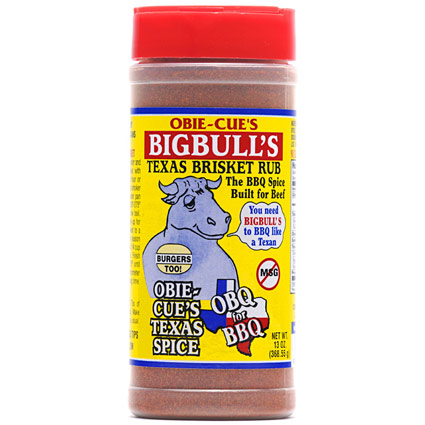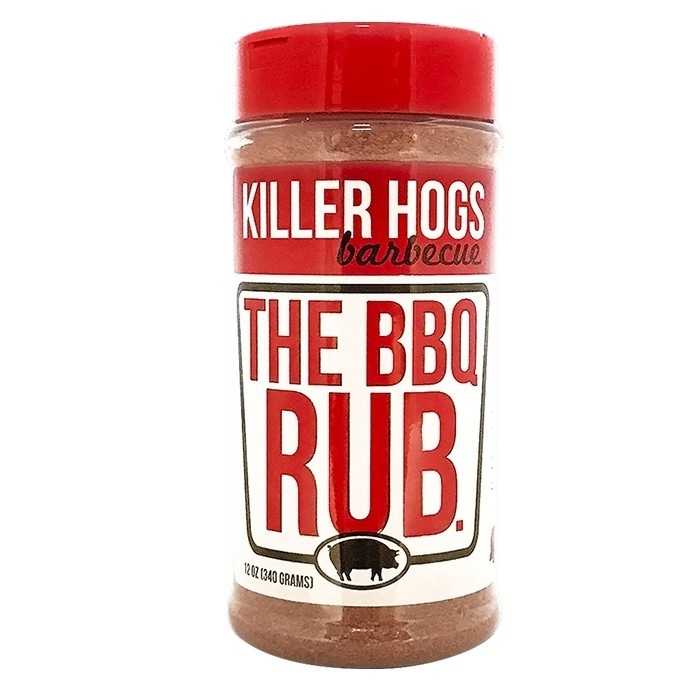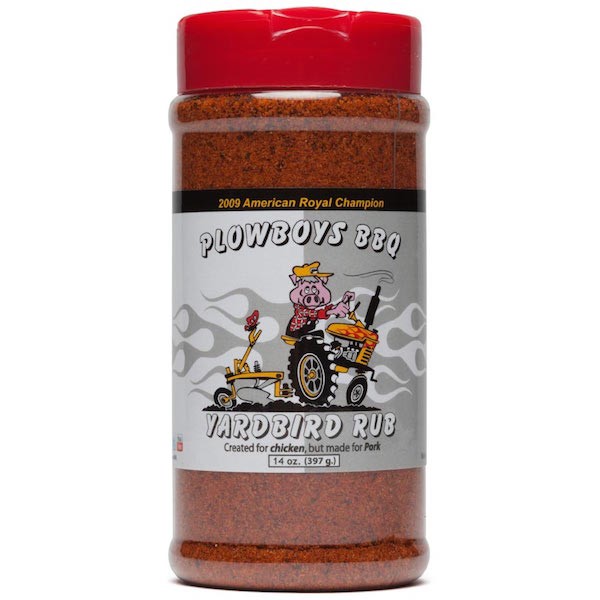
Our Pick of the Best BBQ Rubs in Australia
Make your meat taste a whole lot better with quality bbq rubs.
If you are a keen cook and love a bbq or two, you would be well aware that adding a good bbq rub or sauce marinade to your meat adds a new level of flavour.
Depending on what you are cooking, there are a huge range of different rubs available with new mixes regularly being released by cooks and professional pitmasters.
But what rubs are best for different meats?
In this article we will take a look at some of the popular and unique rubs and sauces available on the market to enhance your bbq experience.
| Model | Name | Overall Rating | Usage | Size | Review | |
|---|---|---|---|---|---|---|
 | OBIE-CUE’S BIG BULLS BRISKET RUB | Brisket | 204 g | Review | CHECK PRICE | |
 | KILLER HOGS BARBECUE THE BBQ RUB | General purpose | 340 g | Review | CHECK PRICE | |
 | PLOWBOYS BBQ YARDBIRD RUB | Chicken, Pork | 408 g | Review | CHECK PRICE |
Best BBQ Rubs in Australia – Reviews 2021

1. Obie-Cue’s Big Bulls Brisket Rub
Made for: Brisket
A true Texas flavour, this bbq rub has been specially crafted for beef.

2. Killer Hogs Barbecue The BBQ Rub
Made for: General purpose
Created by professional BBQ team Killer Hogs, this BBQ rub is the perfect all rounder. With a savory, sweet and spicy kick along with a lovely mahogany colour, this rub highlights the flavour of meat. Featuring paprika, chilli pepper, garlic onion and orange peel the flavour combination will really add a new level of taste to your meat.

3. Plowboys BBQ Yardbird Rub
Made for: Chicken, Pork
Create professional BBQ with this 2009 American Royal Invitational winning rub.
A Comprehensive Guide to BBQ Rubs and Spices
In the cooking world, there is nothing more flavorful than great barbecue. Whether you are cooking on a portable gas bbq or an offset smoker using rubs can really add great flavour to your meat, so when you pair flavorful meat with an intensive cooking process, the result will always be delicious. There’s a reason the United States’ White House is known for holding annual barbecues: savory meat seems to never go out of style!
Behind every delicious bite of barbecue is an equally tasty spice rub. These dry or wet spice blends are applied to food prior to cooking. They penetrate the outer layer and effectively season the meat.
While you can buy rubs at the store, it’s also easy to make them at home! The following will explore the mechanisms behind BBQ rubs and the methods of creating your own delicious recipe.
A Brief BBQ Clarification
Before we continue, it’s important to note the distinction between barbecuing and grilling. Although these two words seem interchangeable, they are actually very different cooking methods. When you barbecue, you use a low and slow cooking method to infuse your meat with delicious flavor — this tends to be in the 225° Fahrenheit range – use a good meat thermometer to ensure you are cooking in the ideal temperature range.
In contrast, when you grill, you adopt high heat over a very quick period of time. This difference in heat and timing sets the two methods apart from each other.
Adding a Flavourful Colour Through Rubs
One of the benefits of barbecuing with spice blends is it solves the low and slow Maillard problem. This problem involves the disparity between low and slow cooking and the Maillard reaction. This reaction, a chemical phenomenon responsible for browning, imparts a delicious sear and flavor. Yet, it cannot occur at temperatures lower than 310° Fahrenheit. Thus, for low heat cooking methods, like barbecue, this reaction becomes nearly impossible.
Yet, through the power of rubs, barbecued meat can receive a flavorful taste and a savory color. They tend to incorporate red chili spices, such as paprika and chili powder. These spices not only impart flavor, but they also effectively stain the meat. This gives a beautifully cooked coloring without the Maillard reaction. Thus, using BBQ rubs, you can have the best of both worlds!
Wet Vs. Dry Rub / Marinade
Ask any BBQ enthusiast, and they will have an opinion on the wet vs. dry rub debate. There is no universal right answer because it all boils down to the flavor. Some people prefer the taste imparted when acidic vinegar is incorporated, whereas others prefer the purity that can be gained from dry spices.
After trying a variety of recipes, you will probably find your own preference. In the meantime, here are some of the differences between wet and dry rubs.
Dry Rubs
The dry rub gets its name from only incorporating dry ingredients. This is normally a combination of dry spices and aromatics. Every recipe differs, but the ratio tends to remain the same; it will always be some multiple of 1 to 1.
For example, a good spice blend will incorporate salt, sugar, black pepper, some form of chili powder, and an aromatic. Respectively, this infuses the rub with seasoning, sweetness, spiciness, smokiness, and enhanced depth of flavor. Following the 1 to 1 ratio, equal parts of all ingredients would be mixed together to create the recipe. It’s as easy as that!
Wet Rubs
The wet rub is not so different than the dry one. The only difference is this option incorporates a liquid element to the recipe. This can include a neutral oil, a sweet vinegar, a savory sauce, a molasses, etc.
Although most of the liquid evaporates, the flavor will not. In fact, the flavor compounds remain with the food while the liquid disappears. Thusly, they are liberated from their previous form and are able to solidify within your food. These compounds are now in their purest form and will vibrantly flavor whatever they are absorbed into.
It’s important to note that the liquid in wet BBQ rubs accomplishes two jobs. While it imparts nuanced flavor, it also creates a binding agent for dry ingredients to adhere to. Whereas a dry rub requires an adept seasoning, a wet rub allows the liquid to do the heavy lifting. It uses its expansive nature to envelope the meat and distribute an especially tasty rub.
How to Apply BBQ Rubs
As with all seasoning processes, you’ll want to heavily cover every inch of the food surface area with your rub. This may seem a bit overzealous, but it’s necessary to impart the flavor throughout the entirety of the meat. Remember: when you’re seasoning, you need to ensure that one bite from the exterior has enough flavor that it will carry over to the interior.
So, don’t hold back when applying your rub. It may seem a bit too aggressive, but trust us, it’s worth it.
Different Rubs for Different Meats
Here are some great dry BBQ rubs to begin experimenting with. Although a suggested meat is included in the recipe, feel free to use an alternative. These recipes are merely guidelines and not rules. Thus, after trying them, you should be empowered to alter them to your own personal tastes!
Chicken All Purpose Rub
- 1/3 Cup brown sugar
- 1/3 Cup chili powder
- 1/4 Cup salt
- 1/4 Cup black pepper
- 2 Tbsp ground cumin
- 2 Tbsp ground mustard
- 1 Tbsp onion powder
- 1 Tbsp garlic powder
- 1 Tbsp paprika
- 1 Tsp cayenne pepper
Pork Sweet and Savory Rub
- 3 Tbsp paprika
- 3 Tbsp brown sugar
- 1 Tbsp onion powder
- 1 Tbsp dried thyme
- 1 Tbsp salt
- 1.5 Tsp garlic powder
- 1 Tsp ground cumin
- 3/4 Tsp cayenne pepper
Beef Cocoa Rub
- 2 Tbsp brown sugar
- 1 Tbsp garlic powder
- 1 Tbsp chili powder
- 1 Tbsp onion powder
- 1 Tbsp cumin
- 1 Tbsp ground black pepper
- 2 Tsp cocoa
- 1 Tsp salt
Closing Thoughts
After learning the tools of simple spice rubs, the sky’s the limit. Armed with a basic understanding of BBQ rubs, you can tackle any form of barbecue. You can be empowered to create your own delicious flavor combinations, add a personal touch to recipes, and make bold barbecue decisions.
